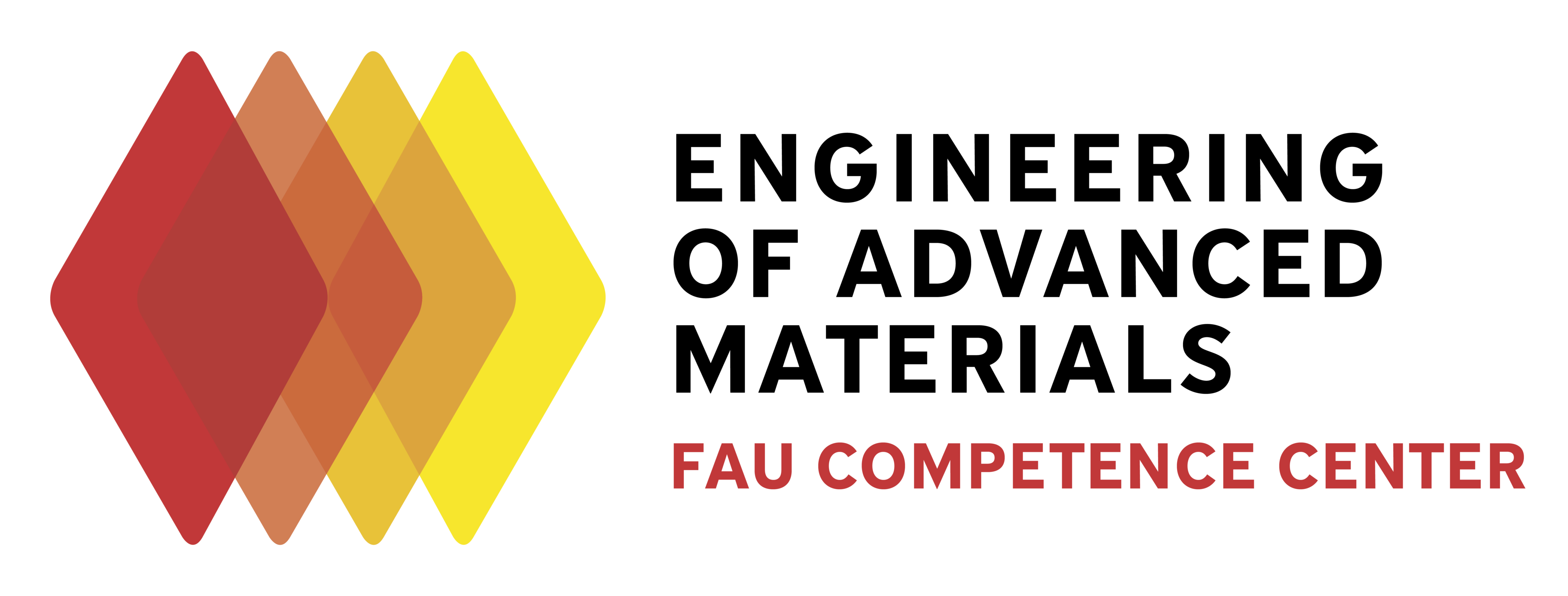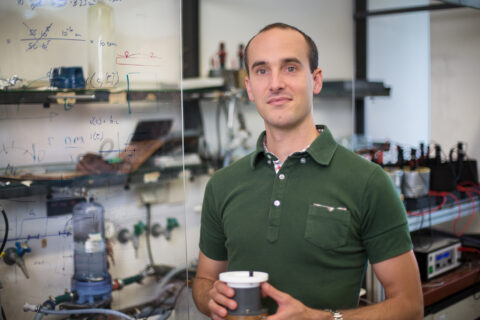Manufacturing solar cells using ultra-high resolution printing
FAU researcher receives ERC Proof of Concept Grant
Manufacturing extremely thin solar cells using sustainable materials and a 3D printer accurate down to the nanometre: that is the focus of research currently being carried out by Prof. Dr. Julien Bachmann, Chair ‘Chemistry of Thin Film Materials’ at FAU. He has now received an ERC Proof of Concept grant for his project. ERC Proof of Concept grants are awarded to researchers who have already received an ERC grant and are now at the stage of exploring potential economic or social benefits of their findings in practice.
In his earlier research, Professor Bachmann was able to show the impact that the surface structure of semiconductors has on the efficiency of solar cells at the smallest level. With a high-resolution 3D printer that is accurate down to 0.000001 millimetres, he now hopes to systematically test which surface structure makes the semiconductor most efficient. This optimisation process is necessary if sustainable materials are to be used in the field of renewable energies.
Until now, semiconductors that are necessary for generating current flow in solar cells have typically been made of silicon. The manufacturing process is, however, rather inflexible and expensive in terms of both energy and resources. If we are to find a more environmentally friendly solution, we will have to find ways of using sustainable materials such as those currently used in household paint or mascara. However, until now solar cells produced using alternative materials and processing procedures have proven to be less efficient than those manufactured using conventional methods. The reason is the imperfectly controlled surface structure of the materials on the nanoscale. In an earlier project, Professor Bachmann investigated ways in which altering the geometric parameters of the surface structure of materials can increase the efficiency of solar cells. He is now focusing on using prototypes to systematically test his previous findings. Professor Bachmann intends using a high-resolution 3D printer to rapidly manufacture various prototypes in which he can easily change individual factors to achieve the best result in the most efficient way.
His team has designed a new method for precise 3D printing known as atomic-layer additive manufacturing, or ALAM. Unlike conventional silicon-based methods where shapes and structures are manufactured by removing superfluous material, the new method involves depositing the semiconductor directly into the required shape from the outset. This method saves material. In order to print precisely with an accuracy of 0.000001 millimetres, the individual atoms are transported and attached to the surface using molecules designed specifically for this purpose.
ALAM was designed by Professor Bachmann’s Chair ‘Chemistry of Thin Film Materials’ at FAU together with the Slovak Academy of Sciences, the Technical University of Denmark and the start-up enterprise Atlant 3D Nanosystems, initially without focusing on solar cells specifically.
Now, the project aims to investigate how far the procedure is suited to manufacturing thin film solar cells. Professor Bachmann would like to expand the capabilities of the ALAM prototype printer to enable different materials, required for manufacturing semiconductors, to be printed in layers, one on top of the other. The team aims to manufacture various solar cell prototypes with different surface structures and test their performance. The aim is to design a sustainable and efficient alternative to conventional solar cells in the near future. The findings could help make renewable energy more accessible and help reduce the dependence on silicon, which is also used for microtechnology in smartphones and computers, when manufacturing solar cells. ‘Normal 3D printing revolutionised the process for manufacturing and developing prototypes in industry. The ALAM technique may trigger a similar revolution on the nano level. It could allow many more economic players to manufacture parts and devices at the micro and nano levels independently,’ explains Professor Bachmann.
ERC Proof of Concept
‘We are very pleased that researchers at FAU regularly receive ERC grants. I am particularly proud of the fact that Prof. Dr. Julien Bachmann is the first researcher at FAU to receive an ERC Proof of Concept grant. This once more goes to show that outstanding research is not only carried out at FAU on a daily basis, but also that our findings are beneficial for society as a whole,’ Prof. Dr. Joachim Hornegger congratulated Prof. Dr. Bachmann on his success.
Bavarian Minister of science Bernd Sibler was also keen to express his congratulations, ‘I am proud that our Bavarian universities are very successful in acquiring funding from the European Research Council. The ERC grants are a benchmark for excellent research conducted by a university at the international level, and they are well-respected in the academic community. Three of the Proof of Concept grants awarded today are destined for researchers in Bavaria. I would like to congratulate Professor Dr. Julien Bachmann and Friedrich-Alexander-Universität Erlangen-Nürnberg and wish them all the very best for their project.’
The European Research Council awards funding to excellent ground-breaking research projects. Unlike ERC main grants (Starting, Consolidator, Advanced and Synergy grants), ERC Proof of Concept grants are not intended for projects focusing on fundamental research. Rather, this line of funding is aimed at researchers who have already received an ERC grant and who now wish to explore the economic and societal potential of their findings. In 2015, Prof. Bachmann received an ERC grant for his research into the perfect geometry for solar cells.
Further information:
Prof. Dr. Julien Bachmann
Department of Chemistry and Pharmacy
Lehrstuhl für Chemistry of thin film materials (Prof. Dr. Bachmann)
- Phone number: +49 9131 85-70551
- Email: julien.bachmann@fau.de

